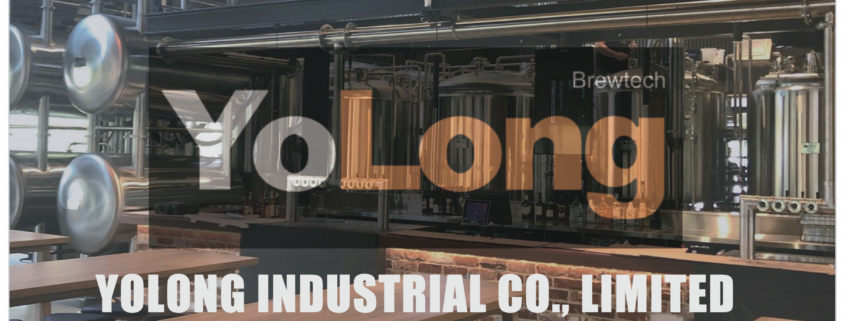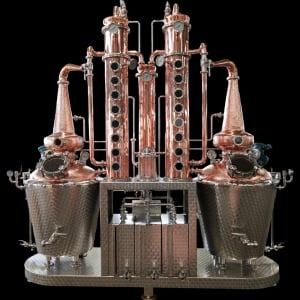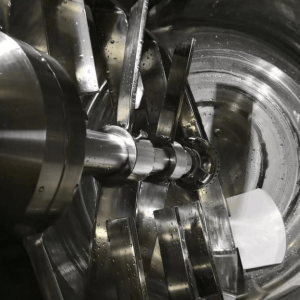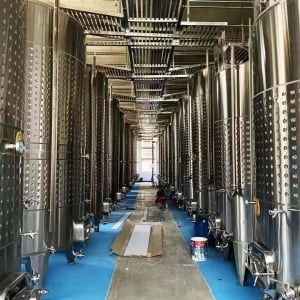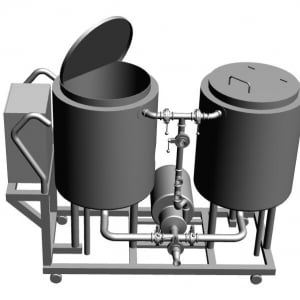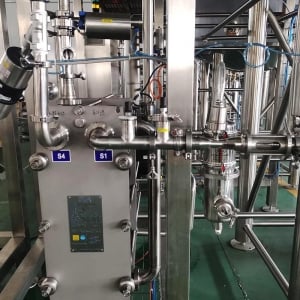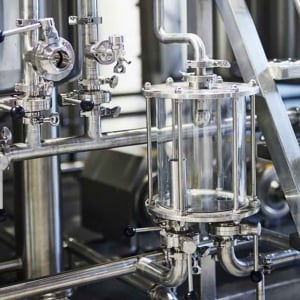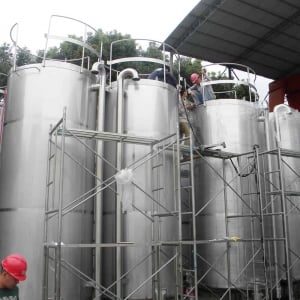Craft Beer Making Equipment
Overview of Craft Beer Making Equipment
Craft beer has seen a tremendous rise in popularity over the past few decades. As more people delve into the world of brewing their own beer, understanding the equipment needed becomes crucial. Whether you’re a homebrewer looking to upscale or a commercial brewery planning to expand, the right craft beer making equipment is essential for quality production. This guide covers everything from the basics to advanced equipment options, providing a thorough overview of what’s needed to brew your perfect craft beer.
Craft beer brewing is both an art and a science. The equipment you use directly impacts the quality, flavor, and consistency of the beer you produce. But with so many different tools and machines available, choosing the right ones can be daunting. In this article, we’ll break down the necessary equipment, guide you through the brewing process, and compare the pros and cons of various options, all while keeping the content engaging and easy to understand.
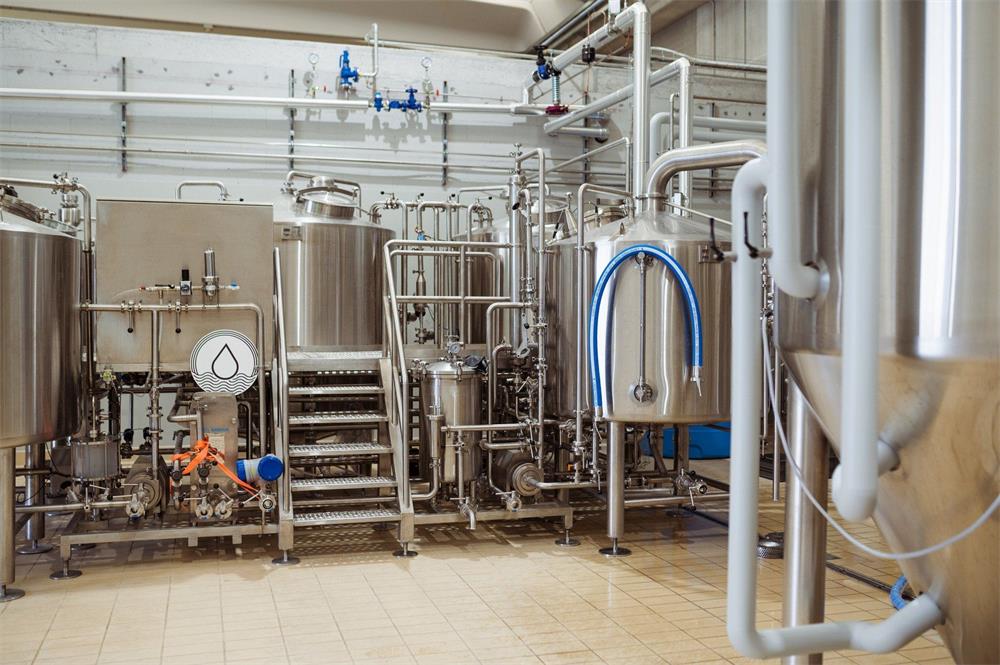
Essential Craft Beer Making Equipment Guide
Brewing craft beer requires a range of equipment, from basic homebrew kits to professional-grade systems. Below, we delve into the key pieces of equipment you’ll need to start brewing, offering insights into their function, importance, and how they contribute to the brewing process.
Brewing Kettle
The brewing kettle is the heart of any brewing setup. It’s where wort—unfermented beer—is boiled and hops are added. The size and material of the kettle can significantly impact the brewing process. Most homebrewers start with a kettle around 5 gallons, but commercial setups may require kettles of 15 gallons or more.
Fermenter
Fermenters are where the magic happens—where yeast transforms wort into beer. Fermenters come in various forms, including plastic buckets, glass carboys, and stainless steel conical fermenters. Conical fermenters are particularly popular in commercial settings because they allow easy separation of yeast from the beer, making the process more efficient.
Mash Tun
A mash tun is used to steep grains in hot water, extracting fermentable sugars. It’s essentially a large insulated container that holds the grain and water mixture at a constant temperature. The quality of the mash tun can affect the efficiency of sugar extraction, directly influencing the beer’s alcohol content and flavor.
Hot Liquor Tank
The hot liquor tank (HLT) is used to heat water, or “liquor,” that will be used in the mashing and sparging processes. In larger systems, the HLT is an essential component, ensuring you have the right amount of hot water available at the correct temperature when needed.
Heat Exchanger
A heat exchanger rapidly cools the wort after boiling, an essential step to prevent unwanted bacteria from spoiling the beer. Plate chillers and immersion chillers are common types, with plate chillers generally being more efficient, especially in larger setups.
Brew Pumps
Brew pumps help move hot liquids between different parts of the brewing system, such as from the mash tun to the brew kettle or from the kettle to the fermenter. They are crucial in large-scale brewing where manually moving large volumes of hot liquid isn’t feasible.
Cleaning and Sanitizing Equipment
Cleanliness is vital in brewing. Any equipment that comes into contact with the beer must be thoroughly cleaned and sanitized to prevent contamination. This includes sanitizers, brushes, and specialized cleaning solutions designed to break down organic material that could spoil your brew.
Types of Craft Beer Making Equipment
Now that we’ve introduced the essential equipment, let’s break down the different types available. This section will help you decide which equipment suits your brewing needs best, whether you’re just starting out or looking to expand an existing brewery.
| Equipment Type | Function | Material Options | Common Sizes | Best For |
|---|---|---|---|---|
| Brewing Kettle | Boils wort, adds hops | Stainless Steel, Aluminum | 5 – 15 gallons (homebrew), 15+ gallons (commercial) | All brewers |
| Fermenter | Ferments wort into beer | Plastic, Glass, Stainless Steel | 5 – 14 gallons (homebrew), 14+ gallons (commercial) | All brewers |
| Mash Tun | Extracts sugars from grains during mashing | Stainless Steel, Insulated Plastic | 5 – 20 gallons (homebrew), 20+ gallons (commercial) | Intermediate to commercial brewers |
| Hot Liquor Tank | Heats water for mashing and sparging | Stainless Steel | 5 – 20 gallons (homebrew), 20+ gallons (commercial) | Intermediate to commercial brewers |
| Heat Exchanger | Cools wort quickly after boiling to avoid contamination | Copper, Stainless Steel | Varies based on system size | All brewers |
| Brew Pumps | Moves hot liquids between brewing stages | Stainless Steel, Plastic | Varies based on system size | Large homebrew to commercial brewers |
| Cleaning Equipment | Ensures all brewing equipment is sanitized and free of contaminants | N/A | N/A | All brewers |
Craft Beer Brewing Process
Understanding the craft beer brewing process is essential for anyone serious about brewing. It’s a step-by-step journey that transforms simple ingredients—water, malt, hops, and yeast—into a delicious craft beer. Here’s a detailed breakdown of the process:
Step 1: Mashing
Mashing is where it all begins. Malted grains are mixed with hot water in the mash tun to activate enzymes that convert starches into fermentable sugars. This step is crucial because the sugar content will determine the beer’s alcohol level.
Step 2: Lautering
After mashing, the mixture is transferred to the lauter tun, where the liquid wort is separated from the spent grains. This process ensures that all the sugars are extracted, leaving behind a clear, sweet wort ready for boiling.
Step 3: Boiling
The wort is then boiled in the brew kettle. This is where hops are added, contributing bitterness, flavor, and aroma to the beer. Boiling also sterilizes the wort, eliminating any potential contaminants.
Step 4: Cooling
Once the boiling is complete, the wort must be quickly cooled to a temperature safe for yeast. This is typically done using a heat exchanger, which rapidly brings the temperature down, preventing bacterial growth and preserving the delicate flavors of the hops.
Step 5: Fermentation
The cooled wort is transferred to a fermenter, where yeast is added. The yeast consumes the sugars in the wort, producing alcohol and carbon dioxide. This process can take anywhere from a few days to a couple of weeks, depending on the beer style.
Step 6: Conditioning
After fermentation, the beer is conditioned, either in the fermenter or in bottles/kegs. This stage allows the flavors to mature and the carbonation to develop. Some beers may also undergo secondary fermentation to refine their taste further.
Step 7: Packaging
Finally, the beer is packaged, either in bottles, cans, or kegs. Proper packaging is crucial to maintain the beer’s freshness and flavor. At this point, your craft beer is ready to be enjoyed!
Craft Beer Equipment Capacity, Space, Design, and Customization
Choosing the right equipment goes beyond just its function—it also involves considering capacity, the space it requires, design features, and customization options. Let’s explore these factors to help you make informed decisions for your brewing setup.
| Parameter | Details |
|---|---|
| Capacity | The capacity of your brewing equipment should match your production goals. Homebrewers might start with 5-15 gallon systems, while commercial brewers may require 100 gallons or more. |
| Space Requirements | Brewing equipment can take up significant space. Consider your available space when selecting equipment. Commercial breweries need larger dedicated areas, while homebrewers can often fit their setups in a garage or basement. |
| Design and Layout | The design of your equipment impacts both efficiency and ease of use. Conical fermenters, for example, allow easy yeast collection. Layout should ensure smooth workflow, minimizing the movement of heavy, hot liquids. |
| Customization Options | Many manufacturers offer customization options, allowing you to tailor the equipment to your specific needs. This can include size adjustments, additional ports, or even aesthetic preferences like custom finishes. |
Craft Beer Making Equipment Suppliers and Price Range
Understanding the cost of craft beer making equipment is crucial for budgeting, whether you’re a hobbyist or a professional brewer. Here, we’ll look at various suppliers and the typical price ranges for essential equipment.
| Equipment | Suppliers | Price Range |
|---|---|---|
| Brewing Kettle | Blichmann, Spike Brewing, SS Brewtech | $150 – $2,000+ (depending on size and material) |
| Fermenter | FastFerment, FermZilla, Ss Brewtech | $50 – $2,500+ (homebrew to commercial sizes) |
| Mash Tun | Igloo, Ss Brewtech, Blichmann | $100 – $3,000+ (based on size and insulation) |
| Hot Liquor Tank | Blichmann, Ss Brewtech, MoreBeer | $100 – $3,500+ (depends on capacity) |
| Heat Exchanger | DudaDiesel, Exchilerator, ChillX | $50 – $1,000+ (based on type and efficiency) |
| Brew Pumps | March, Chugger, Blichmann | $100 – $500+ (depending on power and flow rate) |
| Cleaning Supplies | Five Star, PBW, Star San | $10 – $100+ (depending on quantity and type) |
Installation, Operation, and Maintenance of Craft Beer Making Equipment
Proper installation, operation, and maintenance are key to ensuring your equipment lasts and performs efficiently. This section covers the basics of setting up your brewing system, how to use it effectively, and keeping it in top condition.
| Aspect | Details |
|---|---|
| Installation | Installation depends on the equipment’s size and complexity. Smaller setups might just require assembly, while larger commercial systems may need professional installation services. |
| Operation | Follow manufacturer guidelines for operating each piece of equipment. Proper training and understanding of the brewing process are essential to prevent errors and ensure consistent results. |
| Maintenance | Regular cleaning and maintenance are crucial. Fermenters, in particular, need thorough cleaning after each use. Replace worn-out parts, like seals and gaskets, to avoid leaks and contamination. |
Choosing the Right Craft Beer Making Equipment Supplier
Selecting the right supplier for your craft beer making equipment can be just as important as choosing the equipment itself. Here’s what to consider when making your choice:
| Criteria | Explanation |
|---|---|
| Reputation | Look for suppliers with a solid reputation in the industry. Check reviews, ask for recommendations, and consider how long they’ve been in business. |
| Product Range | A good supplier should offer a wide range of equipment, allowing you to get everything you need from one place, often at a better price or with bulk discounts. |
| Customer Support | Reliable customer support is essential, especially when dealing with complex equipment. Ensure the supplier offers after-sales support and can assist with installation and troubleshooting. |
| Customization Options | If you have specific needs, look for suppliers that offer customization services. This can include adjusting equipment sizes, adding features, or even aesthetic modifications. |
| Price vs. Value | While cost is important, the cheapest option isn’t always the best. Consider the long-term value of the equipment, including durability, warranty, and how it meets your brewing goals. |
Advantages and Limitations of Craft Beer Making Equipment
Every piece of craft beer making equipment has its advantages and limitations. Understanding these can help you make informed decisions and avoid potential pitfalls.
| Equipment | Advantages | Limitations |
|---|---|---|
| Brewing Kettle | Durable, essential for boiling and hop addition. Available in various sizes. | Larger kettles can be expensive and require significant space. |
| Fermenter | Critical for fermentation, available in various sizes and materials. Conical fermenters offer ease of use and efficiency. | Glass carboys are fragile, and plastic fermenters can retain odors and stains. Conical fermenters are pricier. |
| Mash Tun | Insulated models maintain temperature well, ensuring efficient sugar extraction. | Poorly insulated models can lead to temperature drops, affecting efficiency. Larger mash tuns can be heavy and difficult to handle. |
| Hot Liquor Tank | Provides hot water on demand for mashing and sparging, crucial for consistent brewing. | Requires additional space and can be expensive, especially in larger setups. |
| Heat Exchanger | Rapid cooling prevents contamination, essential for maintaining beer quality. | Plate chillers can be difficult to clean thoroughly, and immersion chillers are less efficient for large volumes. |
| Brew Pumps | Facilitates liquid movement in large setups, reducing manual labor. | Can be expensive, and improper use can lead to leaks or pump burnout. |
| Cleaning Supplies | Essential for maintaining equipment hygiene, preventing spoilage and contamination. | Requires diligence and proper technique; inadequate cleaning can lead to ruined batches. |
How to Choose the Best Craft Beer Making Equipment
Selecting the best craft beer making equipment involves more than just picking the most expensive or most popular options. Here are the key factors to consider:
| Consideration | Details |
|---|---|
| Brewing Goals | Consider your brewing goals—are you brewing for fun, or do you plan to sell your beer? This will determine the size and type of equipment you need. |
| Budget | Determine your budget upfront. Remember to account for all aspects of brewing, including ingredients, utilities, and unexpected costs like repairs or upgrades. |
| Available Space | Measure your available space to ensure your equipment fits. Commercial setups require significantly more room than homebrew systems. |
| Experience Level | If you’re new to brewing, start with a simpler setup and upgrade as your skills improve. Advanced brewers may require more specialized, customizable equipment. |
| Future Expansion | Consider your future needs. If you plan to expand your brewing capacity, choose equipment that can scale with you, or that can be easily upgraded. |

FAQ
Here are some frequently asked questions about craft beer making equipment to help you better understand the essentials of setting up your brewing operation.
| Question | Answer |
|---|---|
| What is the most important piece of equipment for brewing craft beer? | The most crucial piece of equipment is arguably the fermenter, as this is where the beer is actually made. However, all equipment plays an essential role in the overall process. |
| Can I start brewing craft beer at home without expensive equipment? | Yes, you can start brewing with basic equipment like a brewing kettle, fermenter, and some basic cleaning supplies. As you get more experienced, you can gradually upgrade your setup. |
| How much space do I need to start brewing craft beer? | For homebrewing, a small kitchen or garage space is usually sufficient. Commercial brewing will require a dedicated space with enough room for larger equipment and storage. |
| What materials should I choose for my brewing equipment? | Stainless steel is the most durable and easy to clean, making it a popular choice for both homebrewers and commercial breweries. Plastic and glass can be used for fermenters. |
| How often should brewing equipment be cleaned? | Brewing equipment should be cleaned thoroughly after each use to prevent contamination and ensure the longevity of the equipment. |
| Can I customize my brewing equipment? | Yes, many suppliers offer customization options to fit your specific brewing needs, from size adjustments to additional features and even aesthetic preferences. |
| What is the lifespan of brewing equipment? | With proper care and maintenance, high-quality brewing equipment can last many years, with some parts potentially needing replacement over time, such as gaskets or seals. |
Conclusion
Craft beer making equipment is an investment in your brewing future. Whether you’re a passionate homebrewer or a commercial brewer looking to scale, choosing the right equipment is crucial to achieving your brewing goals. From understanding the brewing process to selecting the right suppliers, this guide has covered the essentials to help you make informed decisions. By considering factors like capacity, design, and maintenance, you can ensure that your brewing equipment will serve you well for years to come, allowing you to craft the perfect beer every time.

